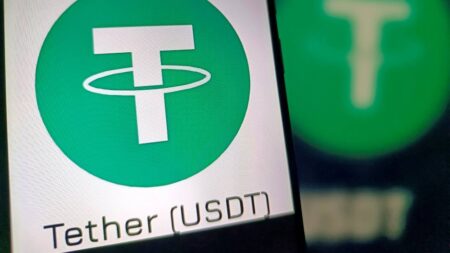What’s better than a set-it-and-forget-it retirement savings strategy? Since 2006, 401(k) plan sponsors have been able to effortlessly encourage their employees to save. Moreover, the preferred savings vehicle—the target-date fund (“TDF”)—clearly explains what it does and for whom it’s intended. By attaching a projected retirement date to its name (the “target date”), it’s immediately apparent to the retirement saver why that fund makes sense.
The beauty of a TDF is that it automatically adjusts the portion of your retirement savings from riskier assets, such as stocks, to safer assets, like bonds, as you age. You don’t have to do anything. Once you set it, you can forget it.
Alas, an optimal retirement savings framework does not guarantee good results when you need them the most. In fact, because a TDF is a mutual fund, it can fail employees just as they are about to retire. Here’s why.
What should you do before you retire?
There’s no question retirement plan sponsors and retirement savers love TDFs. A Vanguard report released in 2024 states that 96% of 401(k) plans offer target-date funds. It adds, “Eighty-three percent of all participants used target-date funds, and 70% of target-date investors had their entire account invested in a single target-date fund.”
That’s a lot of eggs in one basket. This isn’t necessarily a problem, though, because diversification is achieved within the fund itself, so savers don’t have to worry about it. However, when it comes to the ultimate form of safety, the kind retirees want most, these funds fail spectacularly. Once you reach retirement, your biggest concern is likely to be needing to raise cash in a falling market. You avoid this by building up cash reserves just before retirement.
“In the final 2–3 years before retirement, 401(k) participants should begin shifting a portion of their portfolio into more stable, low-volatility assets to protect against sequence of returns risk,” says Richard Bavetz, investment advisor at Carington Financial in Westlake Village, California. “A market downturn within 5 years of retirement can significantly affect the distribution phase of one’s life, from ages 60 to 90 years. The shift might include building a cash buffer or increasing allocations to short-term bonds or stable-value funds to cover the first few years of retirement expenses. The goal is to reduce the need to sell riskier assets like stocks during a market downturn. A thoughtful glide path adjustment—beyond what a typical target-date fund offers—can help preserve capital during this critical transition period.”
What is wrong with target-date funds?
Target date funds can’t provide the cash cushion you’ll want, even as they reduce risk in their portfolios. Worse, depending on the TDF you’re using, you might harm yourself on the growth end.
“They should be very safe, like the Federal Thrift Savings Plan (TSP), which is 70% in the government-guaranteed G fund,” says Ron Surz, president of Target Date Solutions in San Clemente, California. “But this is too conservative in retirement, so you should re-risk, following the research of Kitces and Pfau.”
The Federal TSP is available only to government workers. Private sector workers rarely have such an option. Some have stable value funds composed of “guaranteed insurance contracts,” but that’s not the same as the TSP fund. Others just use bond funds or keep their money in the TDF. These funds don’t offer the same protection as cash.
“Bond funds are limited in providing short-term stability for near-retirees because bond prices go down when interest rates rise,” says Yehuda Tropper, CEO of Beca Life Settlements in Toms River, New Jersey. “This can make investors lose out if they don’t hold bonds to maturity — a problem for near-retirees who might need to liquidate assets when rates are rising.”
When you keep all your retirement savings in a TDF upon reaching retirement, you’re managing your retirement fund similarly to how many colleges manage their endowments. Rather than separating your money into goal-oriented buckets, you’re keeping the whole pile together. That means when you withdraw from the fund, you’re not just withdrawing from cash.
“Target date funds do adjust their allocations as they glide toward a retirement date, but when you sell a share in a target date fund, you’re selling a share of the entire portfolio, not just the cash assets,” says Brian Harrison, president at SAVVI Financial in Boston. “As a result, pre-retirees may want to shift some funds out of a target date fund for those near-term cash needs to avoid risk to their principal.”
The lack of a “cash” bucket exposes you to the sequence of returns risk that everyone is telling you to avoid. If the market dips, you’ll need to dip into principle. Not a good thing. But you have a better alternative.
Is it better to have a managed account?
Enter the concept of a managed 401(k) account. This differs from a self-directed account. A self-directed account allows you to invest in a wide variety of assets outside the plan through a brokerage account within the plan. A managed account may be limited to the options within the plan, but it doesn’t require you to decide what to invest in. In that way, it’s similar to a TDF. Unlike a TDF, the funds you invest in aren’t hidden behind the curtain of an investment company. You get to see everything. And that makes it easier to assign specific assets to goal-oriented buckets.
“Plan sponsors can enhance flexibility by offering managed account solutions that provide personalized investment options and adjust allocations based on an individual’s retirement timeline, risk tolerance, and income needs,” says Bavetz. “Unlike target-date funds, managed accounts can provide tailored strategies, like building a cash buffer or planning for withdrawals. Sponsors can also include a broader range of low-volatility or income-generating investment options to support diverse needs. Giving participants more choice—paired with guidance—helps them transition more smoothly into retirement.”
Vanguard reports that the use of managed accounts has more than doubled in the ten years leading up to 2023. Plan participant use of TDFs, however, dwarfs the use of managed accounts. Still, nearly half the plans offer a managed account program. As more realize the advantages of managed accounts over TDFs, it won’t be surprising to see a greater number of participants using them.
How to use a managed account in your 401k
Do you feel “very confident” in your retirement investment strategy? If not, you’re not alone. Only 16% of those who don’t use a managed account feel “very confident,” according to research by Cerulli and Associations. In contrast, Cerulli found 47% of those using managed accounts felt very confident.
This makes sense. Those in a managed account program get to see how the sausage is made. This brings them closer to the investment process used for their own retirement savings.
What’s more, they know they can allocate a portion of that savings to a clearly safe investment. This can give them peace of mind, knowing they can sleep at night, even if the market takes a sudden downturn.
You’ll need to check with your plan administrator to see if your plan offers a managed account program. If not, ask if the plan offers a money market fund or a similar option as a safe short-term investment. If this is the case, as you approach retirement, you’ll need to discipline yourself to start setting aside savings to build up a cash reserve before retirement. Alternatively, you could hire a financial coach to help you stick to that discipline.
In either case, one thing is certain. You don’t want a target date fund to trip up your retirement.
Read the full article here















